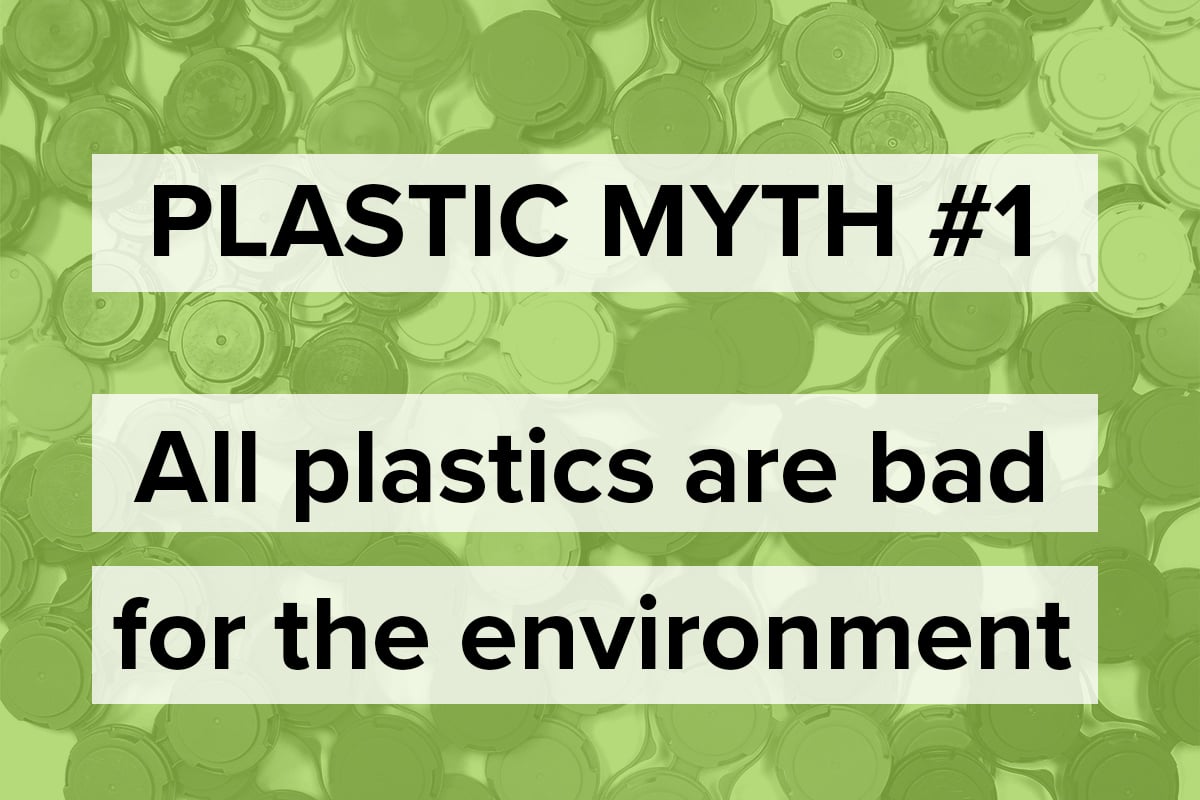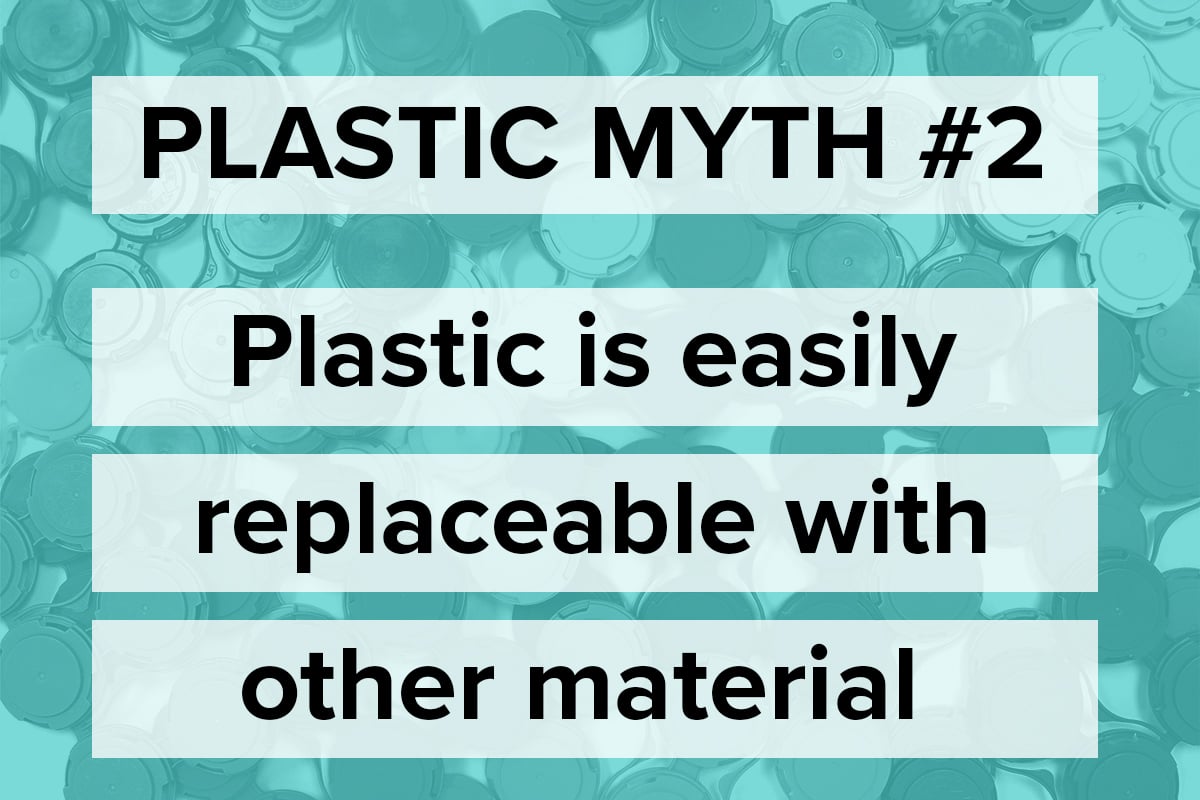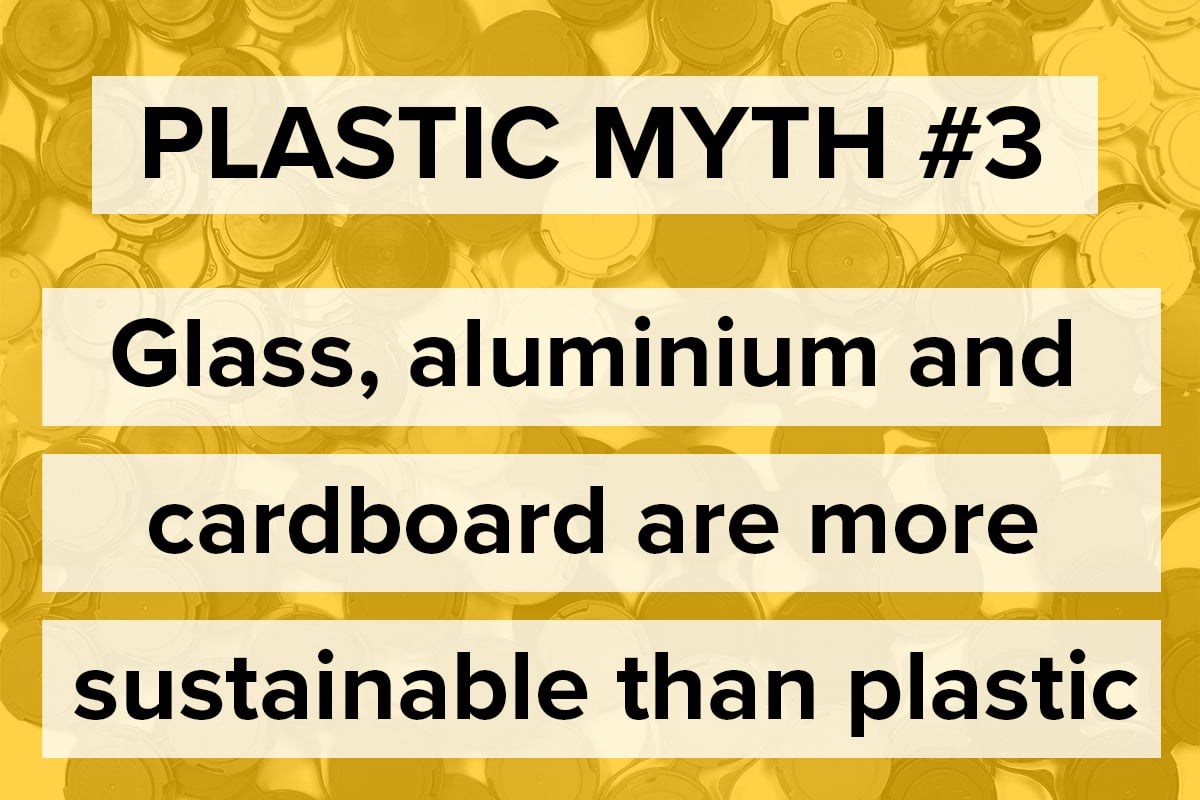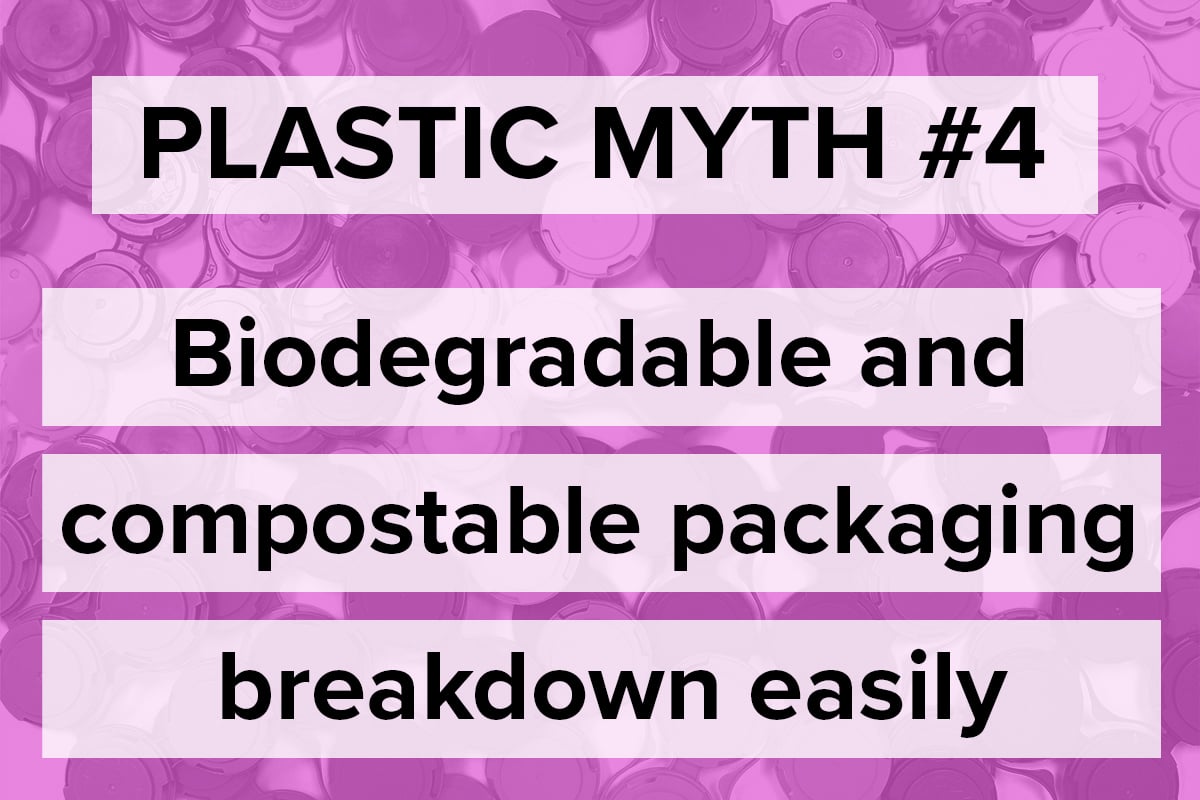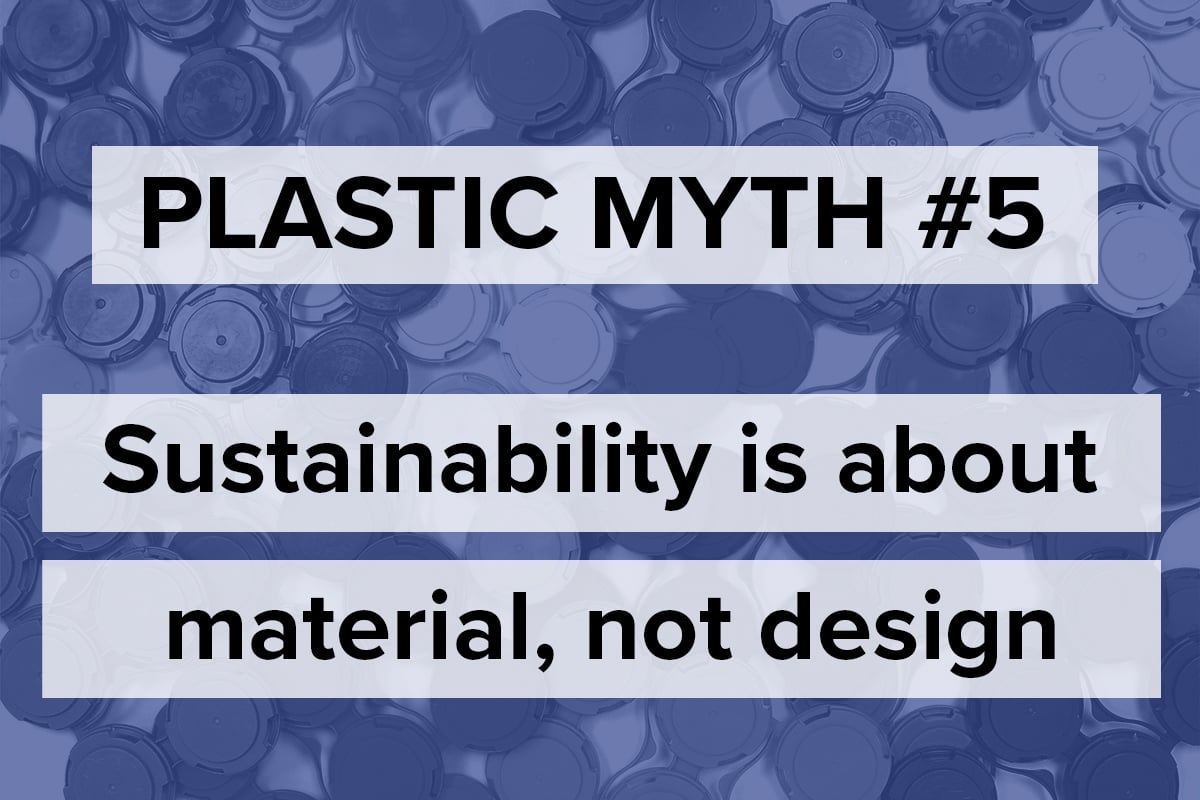Nowadays it seems that any packaging not made from plastic can be touted as eco-friendly or sustainable. With people constantly being bombarded by images of plastic waste accumulation in rivers, our oceans and on beaches, the public backlash against plastic is understandable.
However, real commitment to sustainability requires us to make informed choices. Simply switching out of plastics can lead to unintended consequences like increased food waste, emissions and energy consumption. Thus, a more nuanced conversation about plastic packaging within the value chain and among UK consumers is necessary. Here, we will explore and debunk some of the most common myths surrounding plastic, packaging and environmental impact and how PakTech handles help customers avoid the unintended consequences of switching entirely to alternatives.
5 Plastic Packaging Myths
- All plastics are bad for the environment.
- Plastic is easily replaceable with other material.
- Glass, aluminium and cardboard are more sustainable than plastic.
- Biodegradable and compostable packaging breakdown easily.
- Sustainability is about material, not design.
Myth 1: All Plastics are Bad for the Environment
The growing awareness of plastic pollution has led to an indiscriminate vilification of all things made of plastic, despite clear differences in environmental impact among different plastic products. Such variance in ecological burden is clear when one compares virgin plastic production with recycled plastic production:
- By using 100% recycled HDPE, PakTech handles use 90% less energy, use 100% less petroleum and reduce CO2 emissions when compared to virgin HDPE.
- For one ton of recycled plastic, 5,774 Kwh of energy, 16.3 barrels of oil and 23 cubic meters of landfill space is saved.
- The amount of plastic entering the waste stream is reduced by providing a second market for already existing HDPE.
Myth 2: Plastic is Easily Replaceable with Other Material
Due to its array of benefits, plastic is both widely used and hard to replace. Plastic packaging protects products from damage, contamination and prolongs the shelf-life of food – all of which help to reduce food waste and associated greenhouse gas emissions. From a climate change perspective in fact, methane released from food decomposition is an even worse form of greenhouse gas than CO2 emissions and has a larger carbon footprint than plastic waste. Research by Zero Waste Scotland revealed that food waste was a bigger contributor to climate change than plastic waste.
Plastic packaging has other features that contribute to sustainability. The material’s light weight, durability and low volume contributes to saving resourcing and reduce emissions by requiring less transportation and fuel.
Myth 3: Glass, Aluminium and Cardboard are More Sustainable than Plastic
Widely recognised as recyclable, it is commonly believed that materials like glass, aluminium and cardboard are more sustainable than plastic. A 2019 survey reveals that a majority of consumers perceive such materials favourably with 74% respondents responding positively towards cardboard, 70% towards glass and 59% towards metal tins and cans. The same survey revealed that there is a substantial vilification of plastic amongst today’s consumers, with nearly 2 out of 3 respondents expressing a negative sentiment towards plastic.
Although perhaps counterintuitive, studies demonstrate that replacing all existing plastic packaging with these alternative materials could lead to the doubling of global energy consumption and tripled greenhouse gas emissions.
- Glass, due to its heavy weight, consumes more fuel during transportation.
- Paper bags generate 70% more air and 50 times more water pollutants than plastic.
Replacing all existing plastic packaging with alternative materials would lead to an increase in packaging mass by 6 times.
Myth 4: Biodegradable and Compostable Packaging Breakdown Easily
Biodegradable and compostable packaging similarly enjoy a widely favourable perception from consumers with a report revealing that over 80% of consumers perceive these packaging as environmentally friendly. However, despite consumer expectations, biodegradable and compostable packaging require very specific requirements thus they do not easily breakdown at home or in landfills. Instead, they must be sent to special industrial facilities to be broken down or composted at industrial heat that requires high energy consumption.
Furthermore, the lack of a clear standard when it comes to defining what is considered biodegradable and compostable further adds an additional layer of confusion for consumers and in reality, very little of this material is actually industrially composted due to the lack of treatment infrastructure and ends up being treated as general waste. Moreover, biodegradable and compostable material can have detrimental effects on the recyclability of collected material when they are wrongly sorted by contaminating the recycling stream.
Myth 5: Sustainability is about Material, Not Design
When consumers assess the sustainability level of a packaging, they often give more attention to the product’s material over design. While material is obviously important (which is why we use 100% recycled HDPE!), the design of packaging is just as critical as it determines its reusability and recyclability. As pointed out by Professor David Bucknall at Heriot-Watt University, simply switching from plastic to a different material is not the answer, especially for single-use applications.
Ultimately, continuing to produce single-use packaging will not solve the issue of accumulating waste regardless of what material is used. As demonstrated, each material has its own environmental burdens.
Besides material choice, more efforts should be made to designing packaging products that are reusable and recyclable to align with the circular economy. Designed to be recycled, reusable and recyclable, PakTech handles are not easily contaminated, marked for easy identification of HDPE and made from a single polymer. They truly embrace the principles of sustainability and circularity.
PakTech and the UK Value Chain Share a Common Vision
At PakTech, we adopt a holistic approach to environmental protection and circularity. From the material selection to the single-polymer design of our packaging handles, we integrate the principles of circularity and conservation at every step by focusing on the three Rs - reduce, reuse and recycle. PakTech handles are made from 100% recycled HDPE, reusable many times over and infinitely recyclable.
PakTech and the UK industry share a common vision – to build a sustainable and circular economy. UK’s environmentally-conscious consumers will be happy to use our handles that align with several UK Plastic Pact targets including eliminating single-use packaging, making 100% of plastic packaging reusable or recyclable and ensuring that 30% of plastic packaging content consists of recycled material.
Real commitment to sustainability requires us to make informed decisions. Thanks to PakTech handles’ sustainable material selection and design attributes, UK businesses and consumers can be rest assured knowing that they have avoided the unintended consequences of their choices by choosing our handles.

